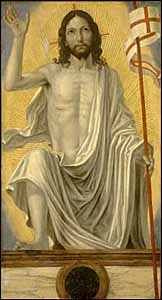Free E-Mail
Bible Studies
Beginning the Journey (for new Christians). en Español
Old Testament
Abraham
Jacob
Moses
Joshua
Gideon
David, Life of
Elijah
Psalms
Solomon
Songs of Ascent
(Ps 120-135)
Isaiah
Advent/Messianic Scriptures
Daniel
Rebuild & Renew: Post-Exilic Books
Gospels
Christmas Incarnation
(Mt, Lk)
Sermon on the Mount
(Mt 5-7)
Mark
Luke's
Gospel
John's Gospel
7 Last Words of Christ
Parables
Jesus and the Kingdom
Resurrection
Acts
The Early Church
(Acts 1-12)
Apostle Paul
(Acts 12-28)
Paul's Epistles
Christ Powered Life (Rom 5-8)
1 Corinthians
2 Corinthians
Galatians
Ephesians
Vision for Church
(Eph)
Philippians
Colossians,
Philemon
1
& 2 Thessalonians
1 & 2 Timothy,
Titus
General Epistles
Hebrews
James
1 Peter
2 Peter, Jude
1, 2, and 3 John
Revelation
Revelation
Conquering Lamb of Revelation
Topical
Glorious Kingdom, The
Grace
Great Prayers
Holy Spirit, Disciple's Guide
Lamb of God
Listening for God's Voice
Lord's Supper
Names of God
Names of Jesus
Christian Art
About Us
Speaking
Contact Us
Dr. Wilson's Books
Donations
Watercolors
Sitemap
108. The Resurrection of Jesus Christ (Luke 24:1-12)
 Ambrogio di Stefano Bergognone, 'Christ Risen from the Tomb' (c. 1490), National Gallery of Art, Washington, DC. Larger image. |
"1 On the first day of the week, very early in the morning, the women took the spices they had prepared and went to the tomb. 2 They found the stone rolled away from the tomb, 3 but when they entered, they did not find the body of the Lord Jesus. 4 While they were wondering about this, suddenly two men in clothes that gleamed like lightning stood beside them. 5 In their fright the women bowed down with their faces to the ground, but the men said to them, 'Why do you look for the living among the dead? 6 He is not here; he has risen! Remember how he told you, while he was still with you in Galilee: 7 "The Son of Man must be delivered into the hands of sinful men, be crucified and on the third day be raised again."' 8 Then they remembered his words.
9 When they came back from the tomb, they told all these things to the Eleven and to all the others. 10 It was Mary Magdalene, Joanna, Mary the mother of James, and the others with them who told this to the apostles. 11 But they did not believe the women, because their words seemed to them like nonsense. 12 Peter, however, got up and ran to the tomb. Bending over, he saw the strips of linen lying by themselves, and he went away, wondering to himself what had happened." (Luke 24:1-12, NIV)
How do you talk matter-of-factly about an event so mind-boggling as the raising of a person from the dead, the Resurrection of Jesus Christ? Hollywood would use special effects to impact the viewer. Novelists would employ powerful prose. But the Scripture just tells the story of the disciples, both male and female, as they discover this unexpected and life-jolting joy. And the Scripture tells it simply, clearly, and convincingly.
The historicity of the Resurrection is crucial to the Christian faith. Our own eternal future hinges on this question. Paul writes:
"And if Christ has not been raised, our preaching is useless and so is your faith. More than that, we are then found to be false witnesses about God, for we have testified about God that he raised Christ from the dead.... If Christ has not been raised, your faith is futile; you are still in your sins.... If only for this life we have hope in Christ, we are to be pitied more than all men." (1 Corinthians 15:14-15, 17, 19)
Each of the Gospel writers adds specific details to the story of the resurrection. Occasionally, it is hard to understand just how all these details fit together. But we're studying Luke's account, so I won't try to weave in everything included in Matthew, Mark, and John. For example, Luke doesn't mention the Roman soldiers who guarded the tomb (Matthew 27:62-66; 28:11-15). We'll focus on Luke's telling of the story.
Perhaps you've heard the story of Jesus' resurrection all your life. Pray now, and then seek to read and study it as if for the first time. Let its truth touch your heart afresh.
The Women Come to the Tomb (Luke 24:1)
"On the first day of the week, very early in the morning, the women took the spices they had prepared and went to the tomb." (Luke 24:1)
The first day of the week for Jews, of course, was the day after the Sabbath -- it is Sunday. This is the third day (Luke 24:7, 46) since Jesus' burial. While modern westerners might measure days in 24-hour periods, the Jews measured time differently, counting each portion of a day as a whole day. The Greek adjective used in verses 7 and 46, tritos means "third in a series." Looking forward, the third day would be the day after tomorrow. Looking backward, it would be the day before yesterday. This is the third day counting parts of three days -- Friday, Saturday, and Sunday.1203 (See Appendix 2H. The Chronology of Holy Week.)
The women begin their trek to the garden tomb very early indeed. The Greek adjective bathys, "at the extreme of, very, exceedingly,"1204 modifies the word for "early morning."
Early that morning the women buy spices (Mark 16:1). The Greek noun arōma, refers to "any kind of fragrant substance, fragrant spice, salve, oil, or perfume," especially used in embalming the dead.1205 Now they are prepared (Greek hetoimazō) to provide whatever additional care is necessary for Jesus' body following his hasty entombment late Friday afternoon.
The Stone Is Rolled Away, the Body Missing (Luke 24:2-3)
"They found the stone rolled away from the tomb, but when they entered, they did not find the body of the Lord Jesus." (Luke 24:2-3)
Mary Magdalene and Mary the mother of Joses (Matthew 27:61; Mark 15:47) had witnessed Jesus' burial on Friday evening. They are sure of the location; there was no mistake about that. And since it is a new tomb, there is no confusing either the tomb or which corpse belongs to Jesus. But when they arrive, the large stone blocking the door has been rolled away and the body is nowhere to be seen.
Two Angels Appear to Them (Luke 24:4-5a)
There may be chattering between themselves at this point or maybe they are struck dumb from the shock of finding no body. "Wondering" (NIV) or "perplexed" (KJV) is the Greek verb apareō, "to be in a confused state of mind, be at a loss, be in doubt, be uncertain."1206 But, whatever the case, they aren't in doubt for long.
"While they were wondering about this, suddenly two men in clothes that gleamed like lightning stood beside them. In their fright the women bowed down with their faces to the ground." (Luke 24:4-5a)
Suddenly, two men are standing beside them. In contrast to the mournful shadows of the tomb, their garments are brilliant and seem to illuminate the sepulcher. The words "gleamed like lightning" (NIV) or "shining" (KJV) translate the Greek verb astraptō, "flash, gleam." The word is used of the flash of lightning,1207 and a similar word exastraptō, is used to describe Jesus' clothing at his transfiguration. These are angels and their garments are shining with the Shekinah glory of God (Exodus 33:11; 34:30; Acts 10:30; Revelation 15:6).
The women are terrified. "Fright" or "afraid" is the Greek adjective emphobos, "pertaining to being in a state of fear, afraid, startled, terrified."1208 Quickly they bow down with their faces to the ground in utter obeisance before the majesty of these angels.
He Has Risen (Luke 24:5b-6a)
Now the angels speak:
"But the men said to them, 'Why do you look for (Greek zēteō) the living among the dead? He is not here; he has risen!" (Luke 24:5b-6a)
The angels ask a startling question: "Why do you seek the living among the dead?" They are in a tomb looking for a dead man. But a grave is no place to find the living Christ, the angels declare with some irony. A grave is the last place to look when you are seeking Life.
He is risen! "Risen" is the Greek verb egeirō, "to cause to return to life, raise up" or "to enter into or to be in a state of life as a result of being raised, rise."1209
To followers who have been stunned by his crucifixion, hearts heavy with dejection, and eyes puffy with tears, these words are like an explosion. Risen! Raised to life! Their emotions are now wrenched again with the news. It must be true, coming from angels! But how can it be?
Jesus Foretells His Resurrection (Luke 24:6b-8)
The angels continue:
"Remember how he told you, while he was still with you in Galilee: 'The Son of Man must be delivered into the hands of sinful men, be crucified and on the third day be raised again (Greek anistēmi).' Then they remembered his words." (Luke 24:6b-8)
A second Greek verb is used to translate "be raised again" -- anistēmi, "rise up, come back from the dead"1210 -- though the sense of both anistēmi and egeirō is very similar.
The angels recite to the women Jesus' own prophecy that this should take place, which we read earlier in Luke:
"The Son of Man must suffer many things and be rejected by the elders, chief priests and teachers of the law, and he must be killed and on the third day be raised to life (Greek egeirō)." (9:22)
"He will be handed over to the Gentiles. They will mock him, insult him, spit on him, flog him and kill him. On the third day he will rise again (Greek anistēmi)." (18:32-33)
The angels speak as if the women have heard these words personally. Though on some occasions Jesus communicates this to the Twelve alone (9:18; 18:31), it is quite possible that these women heard him say it, since they also traveled with the disciples on some trips (see Matthew 17:22-23; Mark 9:30-32). At the very least they have heard of the saying from the Twelve.
The women have a glimmer of recognition. "Then they remembered (Greek mimnēskomai) his words" (Luke 24:8). "To remember," says commentator Joel Green, "consists of more than cognitive evocation, but includes the nuance of understanding or insight."1211 It is clear that the women now believe that Jesus is risen.
The Women Report to the Eleven (Luke 24:9-10)
For a time they seem to be paralyzed by fear (Mark 16:8), but now they run to tell the Eleven (Matthew 28:8; John 20:2).
"When they came back from the tomb, they told all these things to the Eleven and to all the others. It was Mary Magdalene, Joanna, Mary the mother of James, and the others with them who told this to the apostles." (Luke 24:9-10)
The women named here are disciples from Galilee whom Jesus has delivered and healed.1212 Mary Magdalene has been delivered from demonic forces. Mary the Mother of James is apparently "the other Mary" mentioned in Matthew's account (Matthew 28:1). Solome is mentioned in Mark 15:40 at the cross and 16:1 at the tomb. She is probably the same person that Matthew describes as "the mother of Zebedee's sons" (Matthew 27:56).
The Eleven Don't Believe Them (Luke 24:11)
These faithful women disciples are believers, but ironically, the male disciples are not.
"But they did not believe the women, because their words seemed to them like nonsense." (Luke 24:11)
"Nonsense" (NIV) or "idle tales" (KJV) is the Greek noun lēros, "that which is totally devoid of anything worthwhile, idle talk, nonsense, humbug."1213 While used sarcastically in this verse, lēros belongs to the technical vocabulary of medicine where it denotes the delirium caused by a high fever.1214
Peter Runs to the Tomb and Sees the Graveclothes (Luke 24:12)
While they may not believe that Jesus is risen, they are certainly concerned that his body is missing. Peter (apparently with John, according to John 20:3-6) runs to the sepulcher:
"Peter, however, got up and ran to the tomb. Bending over, he saw the strips of linen lying by themselves, and he went away, wondering to himself what had happened." (Luke 24:12)
When he gets to the tomb, he goes inside and bends over the shelf on which Jesus' body had been placed. "Bending over" is the Greek verb parakyptō, "bend over," but here it has the added meaning of, "to bend over for the purpose of looking, with focus on satisfying one's curiosity, take a look."1215
What he sees in the new tomb is troubling -- "the strips of linen lying by themselves." "Strips of linen" (NIV) or "linen clothes" (KJV) is the Greek noun othonion, "(linen) cloth, cloth wrapping." There is some debate between the translation of strips of linen (NIV) or larger cloth wrappings.1216 The word is also used John's Gospel:
"Taking Jesus' body, the two of them wrapped (Greek deō) it, with the spices, in (strips of) linen (othonion). This was in accordance with Jewish burial customs." (John 19:40)
"He [John] bent over and looked in at the (strips of) linen (othonion) lying there but did not go in. Then Simon Peter, who was behind him, arrived and went into the tomb. He saw the strips of linen (othonion) lying there, as well as the burial cloth that had been around Jesus' head. The cloth was folded up by itself, separate from the linen (othonion)." (John 20:5-7)
One other passage in John regarding the raising of Lazarus gives us some idea of burial customs in Palestine at that time:
"The dead man came out, his hands and feet wrapped with strips of linen (keiria), and a cloth around his face. Jesus said to them, 'Take off the grave clothes and let him go.'" (John 11:44)
Here's one explanation of the burial practices:
"The corpse would have been placed on a strip of linen, wide and long enough to envelop it completely. The feet would be placed at one end, and the cloth would then be drawn over the head to the feet, the feet would be bound at the ankles, and the arms secured to the body with linen bandages...."1217
Commentators just don't agree on the details. But one point is significant. Luke mentions "strips of linen lying by themselves" (Luke 24:12) and John tells of "the strips of linen lying there" (John 20:6) -- not scattered about the tomb but lying together. The Church Father Chrysostom observed, "If anyone had removed the body, he would not have stripped it first, nor would he have taken the trouble to remove and roll up the napkin and put it in a place by itself."1218 As Peter surveys the scene, it becomes pretty clear that the body wasn't stolen.
Some believe that Jesus' risen body passed through his burial clothes, so that the myrrh-soaked grave wrappings1219 may have resembled a butterfly's chrysalis after the insect has unfolded its wings and taken flight, the shell remaining but the body gone. We just don't know.
In any event, something remarkable has taken place, but Peter can't quite fathom what it is. Not yet. He goes away "wondering to himself what had happened" (Luke 24:12b). "Wondering" is the Greek verb thaumazō, "to be extraordinarily impressed or disturbed by something, admire, wonder at."1220 He is amazed, but not yet believing that Jesus is raised from the dead, as the women already do.
Lessons for Disciples
What are we as disciples to learn from this passage? Several things:
- Jesus dies, is buried, and is raised from the dead in history, in real-time. This is not portrayed as a myth but as an historical event -- even though neither history nor science have any way to explain such a one-time occurrence.
- Jesus foretells his own death, burial, and resurrection ahead of time -- in fact, on at least three separate occasions.1221
- Angels herald the marvel that he is risen from the dead. Jesus cannot be understood as a dead leader or martyred messiah. We are not to seek for the historical Jesus in a tomb (Luke 24:5).
- The discovery of the empty tomb is not a case of mistaken identity, since the women were witnesses to Jesus' burial.
- The fact of the empty tomb and the presence of the graveclothes are attested by Peter --and John -- before they are convinced that Jesus has actually been raised from the dead.
My dear friends, Luke's testimony -- and the testimony of each of the Gospel writers -- is that Jesus is not dead, he is risen. The historical fact of the resurrection is the foundation stone of the Christian faith. Years later, the Apostle Paul declares the same truth:
"For what I received I passed on to you as of first importance: that Christ died for our sins according to the Scriptures, that he was buried, that he was raised on the third day according to the Scriptures." (1 Corinthians 15:3-4)
Prayer
Father, thank you that the resurrection is more than a comforting story, but an historical fact. Thank you that as Father and Son together you endured the immense distress and agony of coming in the flesh, living in the flesh in the midst of clueless mankind, dying in the flesh like a criminal, and being raised from the flesh to an immortal body. It is hard for me to grasp all this, but I believe it and am in awe. Thank you in the Holy Name of Jesus, my Risen Lord. Amen.
Key Verse
"Why do you look for the living among the dead? He is not here; he has risen!" (Luke 24:5-6)
Questions
Click on the link below to discuss on the forum one or more of the questions
that follow -- your choice.
https://www.joyfulheart.com/forums/topic/2023-108-resurrection/
- Why did the women go to the tomb on Sunday morning very early? Why didn't they go later in the day, do you think? (Luke 24:1)
- What evidence do we have that the empty tomb isn't just a case of mistaken identity of one tomb for another?
- In what way is the angels' declaration ironic? (Luke 24:5b) In what way is it thrilling? (Luke 24:6)
- How could Jesus have predicted his death and resurrection three times (see footnote 19 below) and it still hadn't registered with his disciples? (Luke 24:6-8)
- What do we know about these women who cared for Jesus' corpse and were the first witnesses to his resurrection? Where did they come from? Why did they love Jesus? (Hint: see Luke 8:1-3)
- Why did the female disciples believe in Jesus' resurrection while the male disciples didn't believe yet? (Luke 24:11)
- How do Peter's observations of Jesus' graveclothes (Luke 24:12) bear on the rumor that his body had been stolen? (Matthew 28:13-15)
- Does the validity of the Christian faith rely upon resurrection as an historical fact rather than a religious myth? Yes or no? Support your answer.
 Lessons compiled in 805-page book in paperback, Kindle, & PDF. |
Endnotes
[1203] Tritos, BDAG 1016. Even though Jesus refers to his entombment as a sign such as Jonah (Luke 11:29-30; Matthew 12:39-40), this is a minor parable, not an historical statement. It does not require us to believe, against the clear evidence of all four Gospels, that Jesus remained in the grave for three days and nights (Jonah 1:17). The rabbis said, "A day and a night make an 'Onah and a part of an 'Onah is the whole"; and again, "The part of a day is as the whole day" (Strack and Billerback, I, p. 649, cited in fn. 101 by Leon Morris, The Gospel According to Matthew (Eerdmans, 1992), p. 325-326. Morris notes: "Matthew elsewhere speaks of Jesus as rising 'on the third day' (16:21) and 'after three days' (27:63); there is no reason to think that he sees any difference between these expressions."
[1204] Bathys, BDAG 162, 3b.
[1205] Arōma, BDAG 140-141.
[1206] Apareō, BDAG 119.
[1207] Astraptō, BDAG 146.
[1208] Emphobos, BDAG 326.
[1209] Egeirō, BDAG 271-272.
[1210] Anistēmi, BDAG 83.
[1211] Green, Luke, p. 838.
[1212] See my comments on them at on 8:1-3 above.
[1213] Lēros BDAG 594.
[1214] Green, Luke, p. 839.
[1215] Parakyptō, BDAG 767.
[1216]
Othonion, BDAG 693. The term keiria, "binding material," used to
describe Lazarus' grave wrappings, may refer to some kind of webbing (BDAG 538).
Barrett, John, p. 404, sees the meaning "bandage" attested in the papyri,
and observes that "such winding strips that seem to have been in use in Jewish
practice." He sees othonion as "a linen bandage, such as might be used
for wrapping a corpse" (John, p. 559), and cites Moulton and Milligan for
the phrase othonia euona, "fine linen wrappings for a mummy."
Catholic scholar Raymond E. Brown, The Gospel According to John (Anchor
Bible; Doubleday, 1970), 2:941-942, contains an extended note designed to defend
the idea that the Shroud of Turin (a linen sheet 14 feet long and 4 feet wide)
could have been described by othonia, rather than the modern
interpretation of "linen strips" or "bandages." He says there is no evidence
that Jews wrapped their corpses with bands or strips similar to those used for
Egyptian mummies. "Granted the obscurity of the term," he concludes, "we had
best translate it vaguely as 'cloth wrappings.'" Danker observes concerning the
word othonion, "The applicability of the sense 'bandage' in our
literature is questionable" (BDAG 693).
[1217] J.N. Sanders and B.A. Mastin, A Commentary on the Gospel According to St. John (Black's NT Commentary, 1968), p. 276, cited by Beasley-Murray, Word Biblical Commentary: John, p. 195.
[1218] Chrysostom, In Jo. Hom. 85.4 quoted in Beasley-Murray, John, p. 372.
[1219] Various views are cited by Beasley-Murray, John, p. 372. Brown, John, 2:1007-1008 discusses the theory and discards it since "if the position of the clothes miraculously preserved the image or location of the body, Peter could scarcely have missed the import."
[1220] Thaumazō, BDAG 444-445.
[1221] (1) Luke 9:22 = Matthew 16:21 = Mark 8:31. (2) Luke 9:44 = Matthew 17:22 = Mark 9:31. (3) Luke 18:33 = Matthew 20:19 = Mark 10:34.
Copyright © 2024, Ralph F. Wilson. <pastor![]() joyfulheart.com> All rights reserved. A single copy of this article is free. Do not put this on a website. See legal, copyright, and reprint information.
joyfulheart.com> All rights reserved. A single copy of this article is free. Do not put this on a website. See legal, copyright, and reprint information.
 |

|
In-depth Bible study books
You can purchase one of Dr. Wilson's complete Bible studies in PDF, Kindle, or paperback format -- currently 48 books in the JesusWalk Bible Study Series.
Old Testament
- Abraham, Faith of
- Jacob, Life of
- Moses the Reluctant Leader
- Joshua
- Gideon
- David, Life of
- Elijah
- Psalms
- Solomon
- Songs of Ascent (Psalms 120-134)
- Isaiah
- 28 Advent Scriptures (Messianic)
- Daniel
- Rebuild & Renew: Post-Exilic Books
Gospels
- Christmas Incarnation (Mt, Lk)
- Sermon on the Mount (Mt 5-7)
- Luke's Gospel
- John's Gospel
- Seven Last Words of Christ
- Parables
- Jesus and the Kingdom of God
- Resurrection and Easter Faith
Acts
Pauline Epistles
- Romans 5-8 (Christ-Powered Life)
- 1 Corinthians
- 2 Corinthians
- Galatians
- Ephesians
- Philippians
- Colossians, Philemon
- 1 & 2 Thessalonians
- 1 &2 Timothy, Titus
General Epistles
Revelation
Topical

 To be notified about future articles, stories, and Bible studies, why don't you subscribe to our free newsletter, The Joyful Heart, by placing your e-mail address in the box below. We respect your
To be notified about future articles, stories, and Bible studies, why don't you subscribe to our free newsletter, The Joyful Heart, by placing your e-mail address in the box below. We respect your